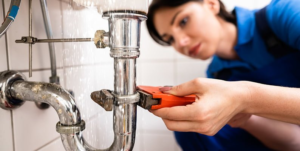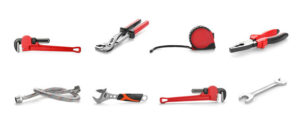Denver Tankless Water Heater is an excellent long-term investment that can save energy and give you endless hot water. They can be a great fit in new homes or when retrofitted to older plumbing systems.

But how do they work? Associate editor Rob Yagid takes you inside a tankless unit to learn what happens at each step.
A Tankless Water Heater provides on-demand hot water, effortlessly meeting most demands and saving energy in the long run. It can save in replacement costs due to a longer lifespan and in utility bills thanks to its efficiency ratings.
A professional plumber can assess your home and water usage, recommend the right size unit to meet demand, install the new system and remove the old one. They will also make sure that you have the proper gas or electric supply lines for your home and properly route them to your new unit. They can provide a detailed estimate for the cost of a Tankless Water Heater, including labor. A plumber charges between $45 and $200 per hour, with most jobs taking 1 to 2 hours.
To determine the best size Tankless Water Heater, a contractor will calculate the total Btu output of your home using a simple formula. They will multiply your peak demand in Gallons Per Minute (GPM) by the number of household fixtures and appliances you use. This will give you a minimum and maximum amount of water the heater can deliver at any time, so you know how much hot water to expect.
If the peak demand is more than the minimum, a plumber will recommend two smaller units that will work in tandem to fulfill your household demands. Then they will calculate the flow rate and temperature of the water at each fixture or appliance. This will help them select the most appropriate model based on your Btu output, peak demand and other factors.
In addition to a plumber’s hourly fee, homeowners may incur other installation costs depending on their home and the type of tankless water heater being installed. This includes the removal of an existing water heater, permit fees, electrical work and insulation, gas line installation and structural modifications.
If the tankless water heater is an electric model, homeowners may need to hire an electrician for a switch. The process involves extending the home’s electric service from a standard half-inch to three-fourths-inch diameter, and it can take up to a couple of hours. Some tankless gas models require a new gas line, while others can use an existing one. In the latter case, you might need to replace your pressure regulator, which can be an expensive job.
Energy Efficiency
A tankless water heater is more energy efficient than a traditional gas or electric tank model. This is because they use energy only when you need hot water, rather than keeping a large supply of water heated all the time. They also have a lower standby energy consumption than conventional tanks, which can be as much as 10 to 15% of a household’s total energy use. A professional plumber can help you decide which type of tankless water heater is right for your home.
Installation of a new tankless water heater requires some home modifications and is usually not a DIY project. For example, the installer may need to disconnect the existing water and power lines, and remove the old unit. In some homes, they may also need to install a venting system for gas units or upgrade the circuit-breaker panel for electric units. This work is best done by a licensed and insured plumbing professional.
The cost of a tankless water heater depends on the size and model you choose, as well as whether it is installed at a single point-of-use or throughout your home. A professional will be able to help you choose the correct model for your needs and recommend the right one to fit your budget.
While the initial cost of a tankless water heater is more expensive than a traditional tank model, it can save you money in the long run by reducing your energy bills. It can also last twice as long as a traditional water heater, meaning that it is an investment that will pay off over the years.
Compared to traditional tanks, tankless models also provide a more flexible flow of hot water. You can take multiple showers at once with a point-of-use tankless unit, while larger whole-home models will provide enough hot water for your entire household. They will also provide a continuous supply of hot water, which means you never have to wait for hot water again.
A professional will install your tankless water heater, connect it to the water and power lines in your home, and then test it for leaks. They can also help you find a good location for the unit and determine which gas or electric model is best for your home.
Installation
If you’re thinking about replacing your old water heater with a Tankless Water Heater, there are some important factors to consider. First, be sure to consult the manufacturer’s guidelines for proper installation. This will ensure that the unit is safe to operate and that it complies with local codes. You should also make sure to assess your home’s energy needs and choose a model that will adequately meet your needs. In addition, you should ensure that your water pipes are properly sized and insulated to prevent energy loss.
Another factor to consider is the location of your tankless electric water heater. You should be careful to avoid installing it in a confined area, as this can lead to poor air circulation and reduced efficiency. Also, be aware of the limitations of your water supply, as some models require a specific water pressure to function. Finally, you should pay attention to your venting system, as back drafts can be a problem in cold temperatures.
Before you can begin installing your new tankless electric water heater, you must drain the old unit and prepare the space for the new one. You should also turn off the circuit breaker for the old unit, as this will protect you from electrocuting yourself while working on it. You’ll then need to disconnect the electrical wiring and remove any mounting brackets from the wall. You should wear insulated gloves to ensure that you don’t touch any live wires.
Next, you’ll need to connect the water supply and drain lines to your new tankless water heater. These connections should be made using stainless steel flexible pipe, which can tolerate high temperatures. You should also install a flow valve, which is used to control the water supply. If you’re installing a gas unit, be sure to install a natural gas shutoff valve as well.
Once you’ve completed the plumbing work, you can switch on the power and start enjoying hot water. It’s important to remember that tankless electric water heaters are not immune to power outages, so you should consider installing a backup generator if your home is in an area prone to power outages. In addition, you should also look into purchasing a recirculation pump for your tankless water heater, as this will help save energy by recirculating the hot water.
Maintenance
The cost of maintaining a tankless water heater varies depending on the materials needed and the type of maintenance performed. Some maintenance tasks require the use of more expensive parts, such as fuses, thermostats, and heating elements, while others are simpler and less costly, such as regular flushing. The cost of labor can also affect the overall maintenance costs. In addition to repairing or replacing parts, tankless water heater maintenance can include routine cleaning tasks and checking the unit for leaks or clogs. Regular flushing can help keep the unit clean and avoid mineral deposits and corrosion, which can increase energy consumption and reduce the lifespan of the heater.
The maintenance costs of a Tankless Water Heater can be reduced by following the manufacturer’s recommended flushing schedule and seeking professional advice on a proper flushing timeline for your area. It is important to follow these guidelines, as failure to do so can void your warranty.
If your water heater develops problems, it is best to contact a professional plumber for repairs. Some problems can be fixed with simple DIY solutions, such as tightening a loose valve or draining the water heater to remove sediment buildup. However, more complex issues, such as a broken thermostat or leaking tank, should be left to the professionals.
Repair costs for a tankless water heater can range from $75 to $150. The most common problem is a broken pilot light, which is a small flame that ignites the gas used to heat the water. If the pilot light is damaged, it can cause the system to make rumbling noises and may not turn on at all. The temperature and pressure relief valve is another important component that must be working properly. If it is damaged, the water may be scalding hot or not heated at all.
The maintenance costs of a Tankless Water heater can be minimized by conducting regular DIY maintenance, scheduling annual maintenance checks, and practicing water and energy conservation. You can also prepare for unexpected maintenance costs by setting aside a portion of your budget for these expenses. Investing in a maintenance service provider with years of experience and excellent customer reviews can help you manage these costs more effectively.




